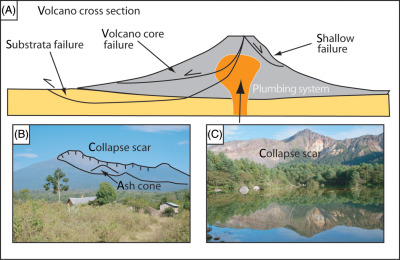
Dormant Giant Stirs Below Bolivia: The Subsurface Activity of Uturuncu Volcano
In the isolated southwestern region of Bolivia, a colossal volcano once considered dormant is quietly awakening scientific interest. A pioneering study published on April 28, 2025, in the Proceedings of the National Academy of Sciences, reveals compelling evidence that the Uturuncu volcano—silent for more than 250,000 years—is showing signs of underground activity. The results, the culmination of a 25-year investigation, portray a volcano very much alive and imply it could act as a crucial natural laboratory for comprehending long-term volcanic processes and how mineral-rich deposits are formed.
Dormant Yet Alive: The Volcanic “Zombie”
Situated within the Andes mountain range, the 6,008-meter-tall Uturuncu volcano is found in a zone known for housing a “supervolcano” caldera system. Despite not erupting in recorded history, satellite monitoring through interferometric synthetic aperture radar (InSAR) initiated by Cornell University scientists over twenty years ago has identified gradual yet consistent ground deformation focused on Uturuncu, a clear indicator of underground magmatic activity.
“When individuals observe volcanoes, they often think, ‘Oh, if it’s not going to erupt, we aren’t interested.’ But actually, volcanoes that appear silent on the surface may not be inactive below,” stated Dr. Matthew Pritchard, professor of earth and atmospheric sciences at Cornell Engineering and the principal investigator of the Uturuncu project. “There are still processes ongoing.”
Uplifting at a rate of up to one centimeter annually, the volcanic uplift signifies that fluids and gases are traversing beneath its crust—what some specialists refer to as a “zombie” volcano: geologically active, even if not currently erupting.
Examining the Depths: Constructing a Volcanic “CAT Scan”
To gain a clearer understanding of the subterranean dynamics, an international cohort of scientists deployed 48 seismometers around Uturuncu from 2009 to 2012. These devices recorded over 1,700 micro-earthquakes, aiding in mapping subterranean activity accurately. Additional data layers—including gravitational field fluctuations, electromagnetic traits, and rock compositions—were compiled to create a three-dimensional representation of Uturuncu’s internal architecture.
The sophisticated imaging unveiled a magmatic-hydrothermal system rich in fluid migration pathways and a significant gas accumulation zone beneath the crater. This wealth of geological information reflects a CAT scan of an ancient yet deceptively active subsurface system.
As per the study’s lead author, Ying Liu of the University of Science and Technology of China, this research highlights the importance of interdisciplinary collaboration. The team also consisted of scientists from Oxford University, ETH Zurich, and Cornell University.
Wider Scientific Consequences
The awakening of Uturuncu carries implications that stretch well beyond Bolivia. The comprehensive methodology implemented here establishes a new benchmark for examining dormant volcanoes universally. Key insights include:
– Enhanced eruption risk assessment mechanisms for other potentially active dormant volcanoes
– Understanding the development of valuable mineral resources through subterranean fluid movement
– A clearer grasp of volcanic life cycles spanning tens of thousands of years
– A flexible model relevant to “zombie” volcanoes globally
Notably, this work paves the way for new prospects in economic geology. As Matthew Pritchard elaborates, the same processes elevating Uturuncu might also facilitate the concentration of metals such as copper, gold, and lithium—resources essential for technology and energy storage.
“The concept is that fluids are flowing through molten rock, acquiring minerals along the way, and then transporting and depositing them elsewhere,” Pritchard explained. “Even though we aren’t particularly concerned about this specific volcano erupting in the near future, we can observe these processes unfolding in real time.”
A Global trend Emerges
Uturuncu is not merely an isolated anomaly. Similar activity patterns have been observed by satellites at other volcanoes around the globe, especially in South America, where the Andes mountain range is home to numerous dormant giants. In Bolivia alone, nearly a dozen volcanoes exhibit signs of underground movement.
“They’re somewhat unique creatures,” remarked Pritchard. “Yet they’re not entirely uncommon.” He cautioned that while Uturuncu may not erupt imminently, adjacent volcanoes could be gearing up for their own events. Continual monitoring is therefore vital—not just for scientific exploration but also for hazard evaluation and community safety.
Scientific Collaboration and Backing
The extended study received backing from various institutions, including:
– National Science Foundation (USA)
– National Environmental Research Council (UK)
– National Key R&D Program of China
– National Natural Science Foundation of China
– The Royal Society (UK)
– EarthScope Consortium’s Primary Instrument Center at New Mexico Tech